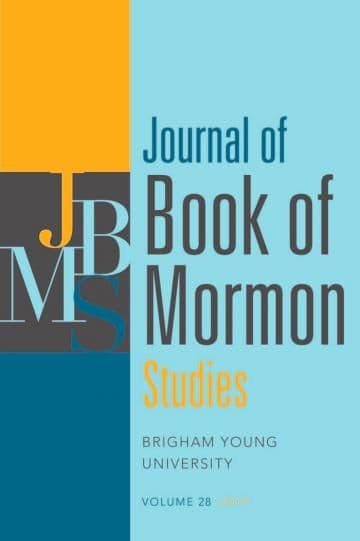Journal
Preserving the Joseph Smith Papyri Fragments: What Can We Learn from the Paper on Which the Papyri Were Mounted?

Title
Preserving the Joseph Smith Papyri Fragments: What Can We Learn from the Paper on Which the Papyri Were Mounted?
Publication Type
Journal Article
Year of Publication
2013
Authors
Muhlestein, Kerry M. (Primary), and Baugh, Alexander L. (Primary)
Journal
Journal of Book of Mormon Studies
Pagination
66-83
Volume
22
Issue
2
Abstract
This article discusses possible explanations regarding the procedures Joseph Smith and his associates used in mounting the Joseph Smith Papyri fragments and their reasons for doing so. The backing materials, some of which contain drawings of a temple plan and plat sketches of northeastern Ohio townships, provide a valuable historical artifact that helps historians answer questions associated with the papyri. The dimensions, gluing techniques, and cutting patterns of the backing paper and papyri also help explain the mounting process, as does an examination of the handwriting on the backing paper. Careful analysis suggests that a portion of the backing material came from several sheets of paper glued together to make a large sheet on which plans for a temple were drawn. Historical evidence suggests that in late 1837 or early 1838, pieces of papyri were glued to this and other papers and cut into smaller pieces, some of which were put under glass to preserve the papyrus fragments from further deterioration.
Subject Keywords
Bibliographic Citation
Terms of use
Items in the BMC Archive are made publicly available for non-commercial, private use. Inclusion within the BMC Archive does not imply endorsement. Items do not represent the official views of The Church of Jesus Christ of Latter-day Saints or of Book of Mormon Central.